
Learning Qlik Sense?: The Official Guide - Second Edition
¥90.46
Get the most out of your Qlik Sense investment with the latest insight and guidance direct from the Qlik Sense team About This Book Updated with new coverage on Qlik Cloud, Qlik Sense Modeling, and Extending the Qlik Analytic Platform. Get insider insight on Qlik Sense and its new approach to business intelligence Explore practical demonstrations for utilizing Qlik Sense to discover data for sales, human resources, and more Who This Book Is For Learning Qlik Sense?: The Official Guide Second Edition is for anyone seeking to understand and utilize the revolutionary new approach to business intelligence offered by Qlik Sense. Familiarity with the basics of business intelligence will be helpful when picking up this book, but not essential. What You Will Learn Understand the vision behind the creation of Qlik Sense, and the promise that data discovery offers to you and your organization Get to grips with the life cycle of a Qlik Sense application Load and manage your data for app creation Visualize your data with Qlik Sense's engaging and informative graphing Administer your Qlik Sense system and monitor its security Build efficient and responsive Associative Models Extend the Qlik Analytic Platform with the Dev Hub Optimize Qlik Sense for sales, human resources, and demographic data discovery In Detail The intuitive and powerful Qlik Sense visual analytics software allows anyone to engage in data discovery, to explore your data, and find meaningful insights to empower your business. Qlik Sense lets you easily create personalized reports and visualizations and reveal essential connections to show new opportunities from every angle. Written by members of the Qlik Sense team, this book is the official guide from Qlik to understanding and using their powerful new product with fully updated coverage to the latest features of the most modern edition of Qlik Sense. Benefit from the vision behind the development of Qlik Sense and get to grips with how Qlik Sense can empower you as a data discovery consumer. Learn how to create your own applications for Qlik Sense to customize it to meet your personal needs for business intelligence, and how to oversee and administer the Qlik Sense data architecture. Finally, explore utilizing Qlik Sense to uncover essential data, with practical examples on finding and visualizing intelligence for sales figures, human resources information, travel expense tracking, and demographic data discovery. Style and approach This book is a practical guide to understand what Qlik Sense is and how to implement it. This is an example-rich, step-by-step book to implement and optimize Qlik Sense for sales, human resources, and demographic data discovery.
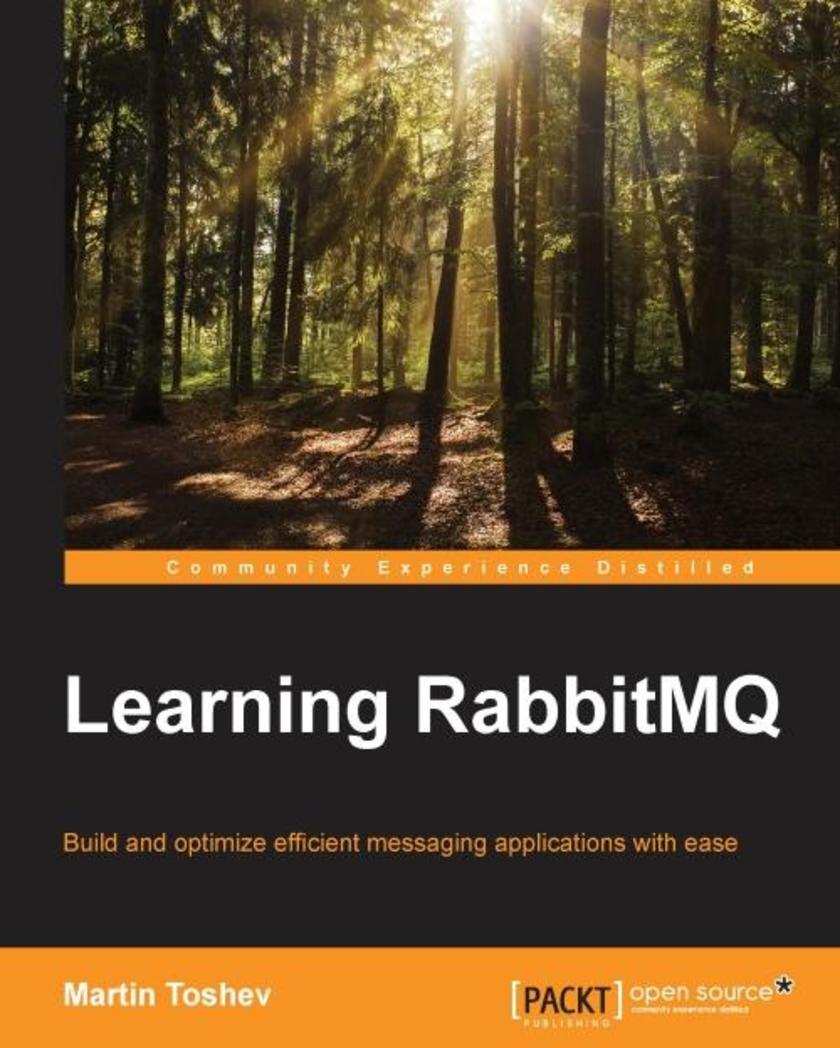
Learning RabbitMQ
¥80.65
Build and optimize efficient messaging applications with ease About This Book Learn to administer, configure, and manage RabbitMQ instances Discover ways to secure and troubleshoot RabbitMQ instances This book is fully up-to-date with all the latest changes to version 3.5 Who This Book Is For If you are a developer or system administrator with a basic knowledge of messaging who wants to learn RabbitMQ, or if you want to further enhance your knowledge in working with the message broker, then this book is ideal for you. To fully understand some examples in the book, a basic knowledge of the Java programming language is required. What You Will Learn Apply messaging patterns using the message broker Administer RabbitMQ using the command line, management Web console, or management REST services Create a cluster of scalable, and highly-available, RabbitMQ instances Use RabbitMQ with the Spring Framework, MuleESB, WSO2, and Oracle databases Deploy RabbitMQ using Puppet, Vagrant, or Docker Fine-tune the performance of RabbitMQ Monitor RabbitMQ using Nagios, Munin, or Monit Secure, troubleshoot, and extend RabbitMQ In Detail RabbitMQ is Open Source Message Queuing software based on the Advanced Message Queue Protocol Standard written in the Erlang Language. RabbitMQ is an ideal candidate for large-scale projects ranging from e-commerce and finance to Big Data and social networking because of its ease of use and high performance. Managing RabbitMQ in such a dynamic environment can be a challenging task that requires a good understanding not only of how to work properly with the message broker but also of its best practices and pitfalls. Learning RabbitMQ starts with a concise de*ion of messaging solutions and patterns, then moves on to concrete practical scenarios for publishing and subscribing to the broker along with basic administration. This knowledge is further expanded by exploring how to establish clustering and high availability at the level of the message broker and how to integrate RabbitMQ with a number of technologies such as Spring, and enterprise service bus solutions such as MuleESB and WSO2. We will look at advanced topics such as performance tuning, secure messaging, and the internals of RabbitMQ. Finally we will work through case-studies so that we can see RabbitMQ in action and, if something goes wrong, we'll learn to resolve it in the Troubleshooting section. Style and approach Each chapter of the book is an easy-to-follow guide that expands and builds on the knowledge already gained in previous chapters. Throughout the course of the book, a sample system called the CSN (Corporate Social Network) is used to illustrate the core principles described. At the end of each chapter, there is a Q&A session that covers practical questions that may arise in practice when working with RabbitMQ.

GameMaker Programming By Example
¥80.65
Master the development of 2D games by learning to use the powerful GameMaker Language and tools provided by the GameMaker: Studio workspace and engine! About This Book Rapidly develop games using the powerful yet easy easy-to to-use GameMaker: Studio engine Comprehensive: This is a comprehensive guide to help you learn and implement GameMaker’s features. Go through step-by-step tutorials to design and develop unique games Who This Book Is For If you have at least some basic programming experience of JavaScript or any other C-like languages, then this book will be great for you. No experience beyond that is assumed. If you have no game development experience and are looking for a hobby, are an experienced game developer looking to master some advanced features, or fit anywhere in that spectrum, then you will find GameMaker: Studio and this book to be very useful in helping you create exciting games. What You Will Learn Understand the GameMaker: Studio interface and tools to quickly create the various assets used in your games Translate some of the GameMaker: Studio drag and drop functions to the GameMaker language Create games with random elements for exciting gameplay Use the basic GameMaker file I/O and encryption systems Utilize the GameMaker networking functions to create multiplayer games Give AI routines to your enemies to make challenging gameplay Create particle systems to give your game exciting graphics Understand the various debugging techniques available in GameMaker: Studio In Detail This book is excellent resource for developers with any level of experience of GameMaker. At the start, we’ll provide an overview of the basic use of GameMaker: Studio, and show you how to set up a basic game where you handle input and collisions in a top-down perspective game. We continue on to showcase its more advanced features via six different example projects. The first example game demonstrates platforming with file I/O, followed by animation, views, and multiplayer networking. The next game illustrates AI and particle systems, while the final one will get you started with the built-in Box2D physics engine. By the end of this book, you have mastered lots of powerful techniques that can be utilized in various 2D games. Style and approach A This step-by-step guide that follows and with details ons different topics throughout the creation of various examples.
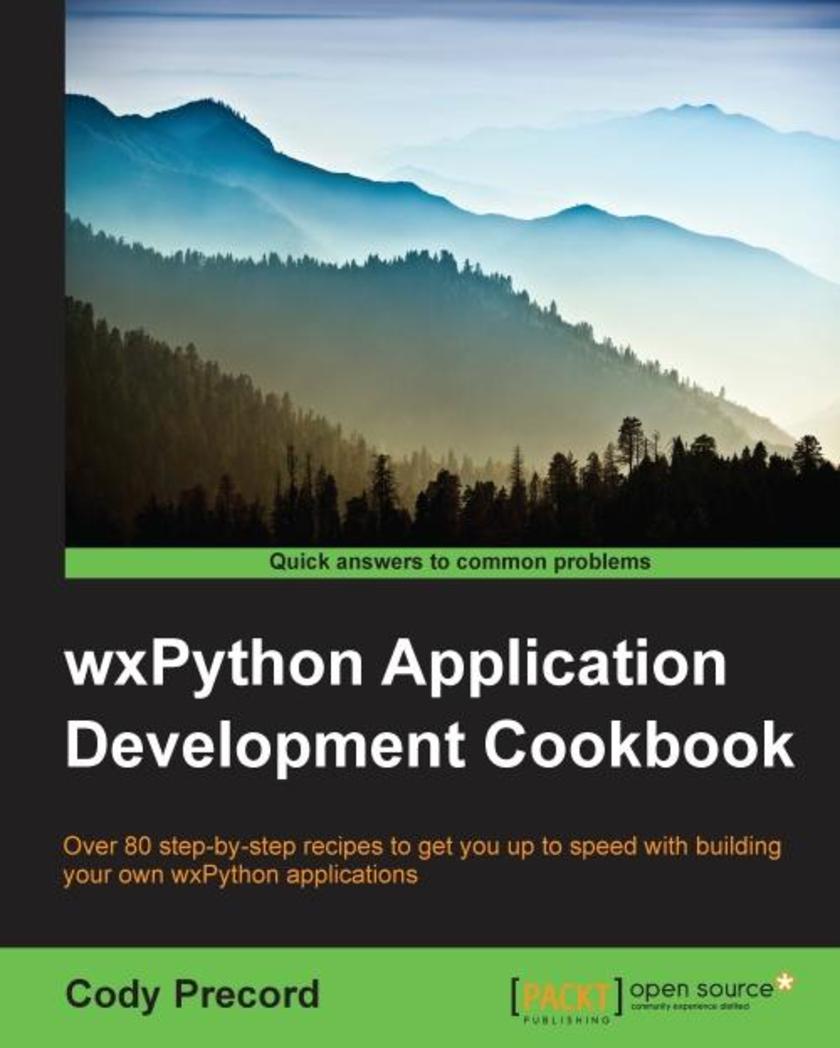
wxPython Application Development Cookbook
¥80.65
Over 80 step-by-step recipes to get you up to speed with building your own wxPython applications About This Book This book empowers you to create rich cross-platform graphical user interfaces using Python It helps you develop applications that can be deployed on Windows, OSX, and Linux The recipes in the book involve real-world applications, giving you a first-hand experience of the practical scenarios Who This Book Is For For those who are familiar with programming in Python and want to start building applications with graphical user interfaces, this book will get you up and running quickly. A basic understanding of the Python programming language and object-oriented concepts are all that is needed. What You Will Learn Create full featured user interfaces Design and develop custom controls Deploy and distribute wxPython applications to Windows, Macintosh OS X, Linux, and other UNIX-like environments Handle and respond to application events Manage and display data using grids Interact with web services from your GUI Use Paint events to draw custom displays Support the display of user interfaces in multiple languages In Detail wxPython is a GUI toolkit for the Python programming language built on top of the cross-platform wxWidgets GUI libraries. wxPython provides a powerful set of tools that allow you to quickly and efficiently building applications that can run on a variety of different platforms. Since wxWidgets provides a wrapper around each platform’s native GUI toolkit, the applications built with wxPython will have a native look and feel wherever they are deployed. This book will provide you with the skills to build highly functional and native looking user interfaces for Python applications on multiple operating system environments. By working through the recipes, you will gain insights into and exposure to creating applications using wxPython. With a wide range of topics covered in the book, there are recipes to get the most basic of beginners started in GUI programming as well as tips to help experienced users get more out of their applications. The recipes will take you from the most basic application constructs all the way through to the deployment of complete applications. Style and approach This book is a collection of step-by-step recipes that introduce the various components and concepts of wxPython in a conversational and easy-to-follow way. Each recipe contains coded examples along with detailed explanations about the key points of each topic. Each topic is designed to introduce and show you how to use a single feature from the wxPython library.
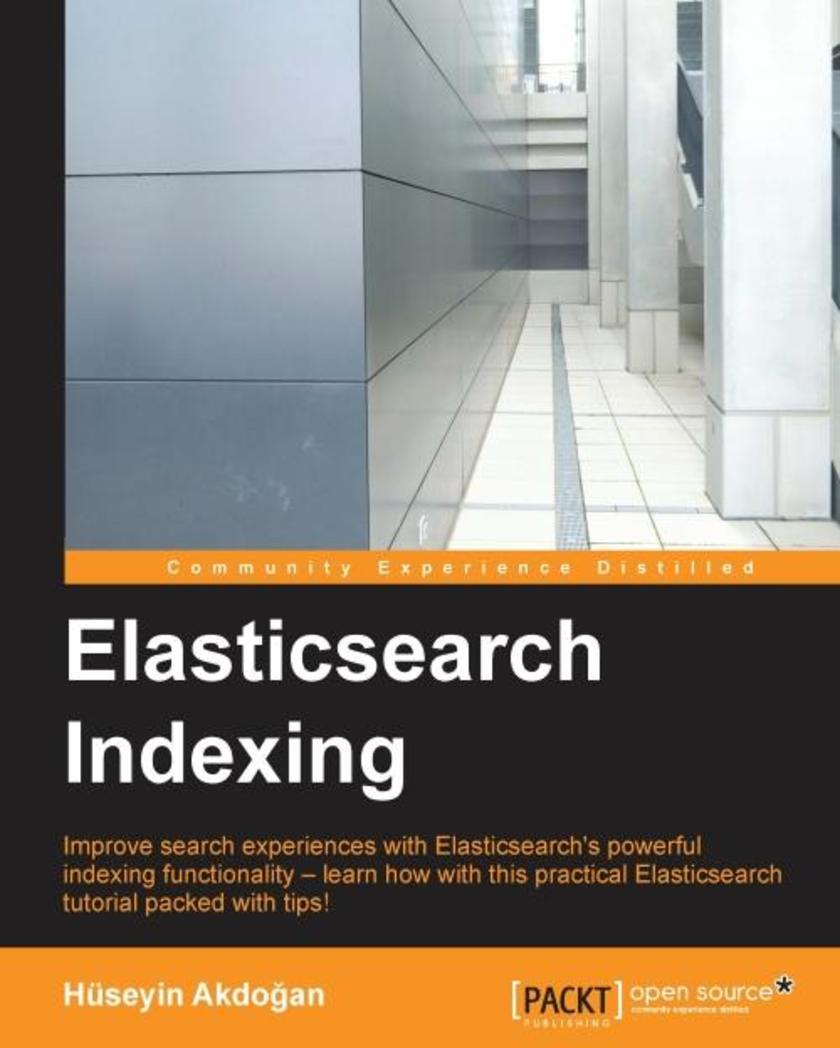
Elasticsearch Indexing
¥54.49
Improve search experiences with ElasticSearch’s powerful indexing functionality – learn how with this practical ElasticSearch tutorial, packed with tips! About This Book Improve user’s search experience with the correct configuration Deliver relevant search results – fast! Save time and system resources by creating stable clusters Who This Book Is For If you understand the importance of a great search experience this book will show you exactly how to build one with ElasticSearch, one of the world’s leading search servers. What You Will Learn Learn how ElasticSearch efficiently stores data – and find out how it can reduce costs Control document metadata with the correct mapping strategies and by configuring indices Use ElasticSearch analysis and analyzers to incorporate greater intelligence and organization across your documents and data Find out how an ElasticSearch cluster works – and learn the best way to configure it Perform high-speed indexing with low system resource cost Improve query relevance with appropriate mapping, suggest API, and other ElasticSearch functionalities In Detail Beginning with an overview of the way ElasticSearch stores data, you’ll begin to extend your knowledge to tackle indexing and mapping, and learn how to configure ElasticSearch to meet your users’ needs. You’ll then find out how to use analysis and analyzers for greater intelligence in how you organize and pull up search results – to guarantee that every search query is met with the relevant results! You’ll explore the anatomy of an ElasticSearch cluster, and learn how to set up configurations that give you optimum availability as well as scalability. Once you’ve learned how these elements work, you’ll find real-world solutions to help you improve indexing performance, as well as tips and guidance on safety so you can back up and restore data. Once you’ve learned each component outlined throughout, you will be confident that you can help to deliver an improved search experience – exactly what modern users demand and expect. Style and approach This is a comprehensive guide to performing efficient indexing and providing relevant search results using mapping, analyzers, and other ElasticSearch functionalities.

Magento 2 Developer's Guide
¥80.65
Harness the power of Magento 2 – The most recent version of the world’s favourite e-Commerce platform for your online store About This Book Set up, configure, and power up your Magento environment from development to production Master the use of Web API to communicate with the Magento system and create custom services Create custom modules from scratch to extend the core functionality of the Magento system Who This Book Is For This book is intended primarily for intermediate to professional-level PHP developers who are interested in Magento development. For backend developers, several topics are covered that will enable you to modify and extend your Magento 2 store. Frontend developers will also find some coverage on how to customize the look of the site in the frontend. What You Will Learn Set up the development and production environment of Magento 2 Understand the new major concepts and conventions used in Magento 2 Build a miniature yet fully-functional module from scratch to manage your e-commerce platform efficiently Write models and collections to manage and search your entity data Dive into backend development such as creating events, observers, cron jobs, logging, profiling, and messaging features Get to the core of frontend development such as blocks, templates, layouts, and the themes of Magento 2 Use token, session, and Oauth token-based authentication via various flavors of API calls, as well as creating your own APIs Get to grips with testing Magento modules and custom themes, which forms an integral part of development In Detail Magento is one of the most exciting, flexible, and customizable e-commerce systems. It offers you an extensive suite of powerful tools for creating and managing an online store. After years of development, Magento 2 introduces itself with a strong emphasis on modularity, Web API's, automated testing and overall new technology stack platform. The long-awaited Magento 2 release introduces a whole new e-commerce platform to develop online stores. The all new Magento 2 architecture, Web APIs, and a host of other features are equally challenging to master as much as they are exciting to use. This book will ease the learning curve by offering step-by-step guidance on how to extend the core functionality of your Magento 2 store. This book is your one-stop guide to build and customize a quality e-commerce website from the latest version of one of the largest, fastest growing, and most popular e-commerce platforms—Magento 2. We start off with an introduction to the fundamental concepts of Magento to give you a foundation to work from. We then move on to configure the development and basic production environment for Magento. After this, you’ll get to grips with the major concepts and conventions that are new to the Magento 2 platform. We then delve deeper to get to the core of automated deployments, persisting data, writing data fixture *s and applying various backend and frontend modifications. As we near the end of the book, you will learn to make API calls and write automated tests. Finally, you will be guided through building a full-blown helpdesk module from scratch. By the end of this book, you will have learned a wide range of techniques to extend and customize your Magento 2 store to fit the requirements of your business. Style and approach This book is a mix of theoretical and step-by-step approaches, explained in a conversational and easy-to-follow style. Topics are explained sequentially, giving detailed explanations of the basic and advanced features to get you working on Magento 2.
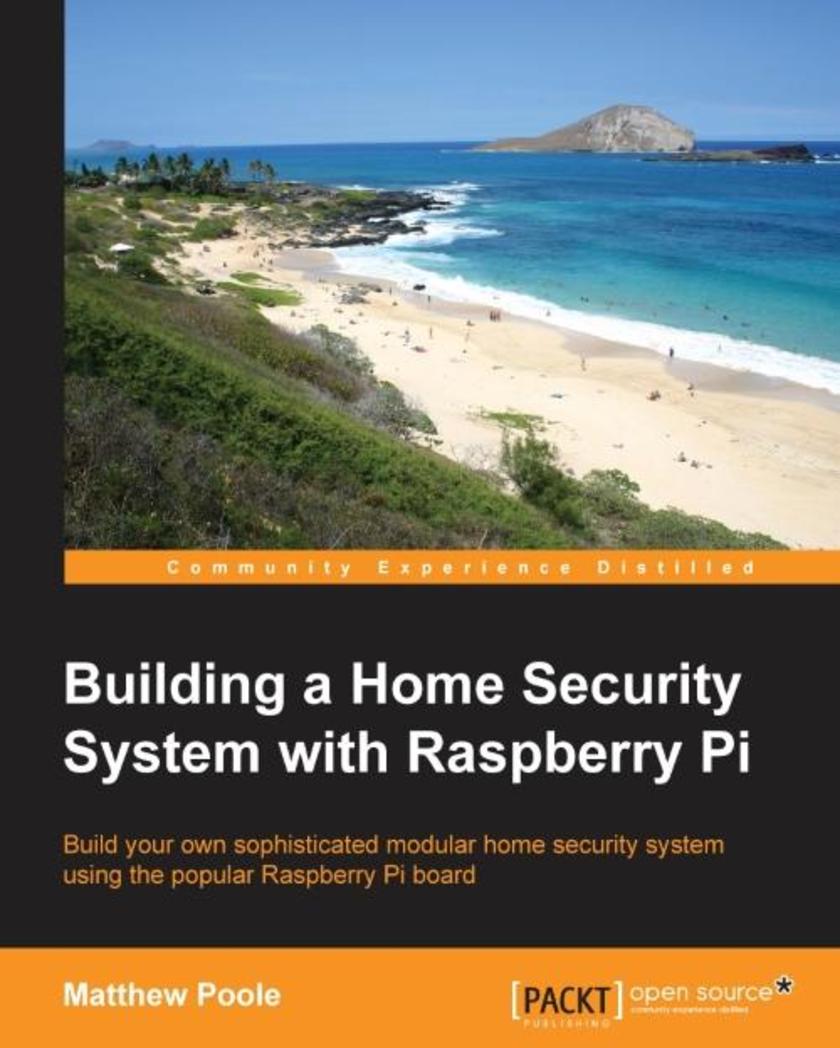
Building a Home Security System with Raspberry Pi
¥63.21
Build your own sophisticated modular home security system using the popular Raspberry Pi board About This Book This book guides you through building a complete home security system with Raspberry Pi and helps you remotely access it from a mobile device over the Interne It covers the fundamentals of interfacing sensors and cameras with the Raspberry Pi so that you can connect it to the outside world It follows a modular approach so that you can choose the modules and features you want for your customized home security system Who This Book Is For This book is for anyone who is interested in building a modular home security system from scratch using a Raspberry Pi board, basic electronics, sensors, and simple *s. This book is ideal for enthusiastic novice programmers, electronics hobbyists, and engineering professionals. It would be great if you have some basic soldering skills in order to build some of the interface modules. What You Will Learn Understand the concepts behind alarm systems and intrusion detection devices Connect sensors and devices to the on-board digital GPIO ports safely Monitor and control connected devices easily using Bash shell *ing Build an I/O port expander using the I2C bus and connect sensors and anti-tamper circuits Capture and store images using motion detectors and cameras Access and manage your system remotely from your mobile phone Receive intrusion alerts and images through your e-mail Build a sophisticated multi-zone alarm system In Detail The Raspberry Pi is a powerful low-cost credit-card-sized computer, which lends itself perfectly as the controller for a sophisticated home security system. Using the on-board interfaces available, the Raspberry Pi can be expanded to allow the connection of a virtually infinite number of security sensors and devices. The Raspberry Pi has the processing power and interfaces available to build a sophisticated home security system but at a fraction of the cost of commercially available systems. Building a Home Security System with Raspberry Pi starts off by showing you the Raspberry Pi and how to set up the Linux-based operating system. It then guides you through connecting switch sensors and LEDs to the native GPIO connector safely, and how to access them using simple Bash *s. As you dive further in, you’ll learn how to build an input/output expansion board using the I2C interface and power supply, allowing the connection of the large number of sensors needed for a typical home security setup. In the later chapters of the book, we'll look at more sophisticated topics such as adding cameras, remotely accessing the system using your mobile phone, receiving intrusion alerts and images by e-mail, and more. By the end of the book, you will be well-versed with the use of Raspberry Pi to power a home-based security system that sends message alerts whenever it is triggered and will be able to build a truly sophisticated and modular home security system. You will also gain a good understanding of Raspberry Pi's ecosystem and be able to write the functions required for a security system. Style and approach This easy-to-follow guide comprises a series of projects, where every chapter introduces a new concept and at the end of the book, all these concepts are brought together to create an entire home security system. This book features clear diagrams and code every step of the way.
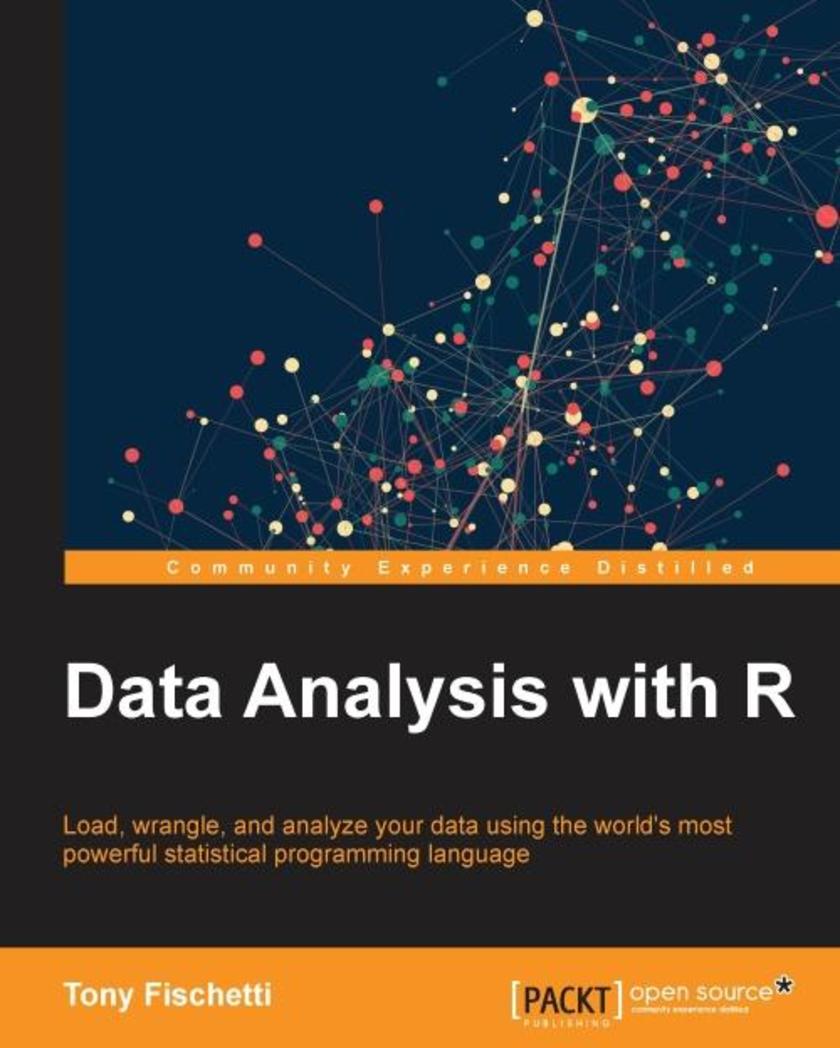
Data Analysis with R
¥99.18
Load, wrangle, and analyze your data using the world's most powerful statistical programming language About This Book Load, manipulate and analyze data from different sources Gain a deeper understanding of fundamentals of applied statistics A practical guide to performing data analysis in practice Who This Book Is For Whether you are learning data analysis for the first time, or you want to deepen the understanding you already have, this book will prove to an invaluable resource. If you are looking for a book to bring you all the way through the fundamentals to the application of advanced and effective analytics methodologies, and have some prior programming experience and a mathematical background, then this is for you. What You Will Learn Navigate the R environment Describe and visualize the behavior of data and relationships between data Gain a thorough understanding of statistical reasoning and sampling Employ hypothesis tests to draw inferences from your data Learn Bayesian methods for estimating parameters Perform regression to predict continuous variables Apply powerful classification methods to predict categorical data Handle missing data gracefully using multiple imputation Identify and manage problematic data points Employ parallelization and Rcpp to scale your analyses to larger data Put best practices into effect to make your job easier and facilitate reproducibility In Detail Frequently the tool of choice for academics, R has spread deep into the private sector and can be found in the production pipelines at some of the most advanced and successful enterprises. The power and domain-specificity of R allows the user to express complex analytics easily, quickly, and succinctly. With over 7,000 user contributed packages, it’s easy to find support for the latest and greatest algorithms and techniques. Starting with the basics of R and statistical reasoning, Data Analysis with R dives into advanced predictive analytics, showing how to apply those techniques to real-world data though with real-world examples. Packed with engaging problems and exercises, this book begins with a review of R and its syntax. From there, get to grips with the fundamentals of applied statistics and build on this knowledge to perform sophisticated and powerful analytics. Solve the difficulties relating to performing data analysis in practice and find solutions to working with “messy data”, large data, communicating results, and facilitating reproducibility. This book is engineered to be an invaluable resource through many stages of anyone’s career as a data analyst. Style and approach Learn data analysis using engaging examples and fun exercises, and with a gentle and friendly but comprehensive "learn-by-doing" approach.
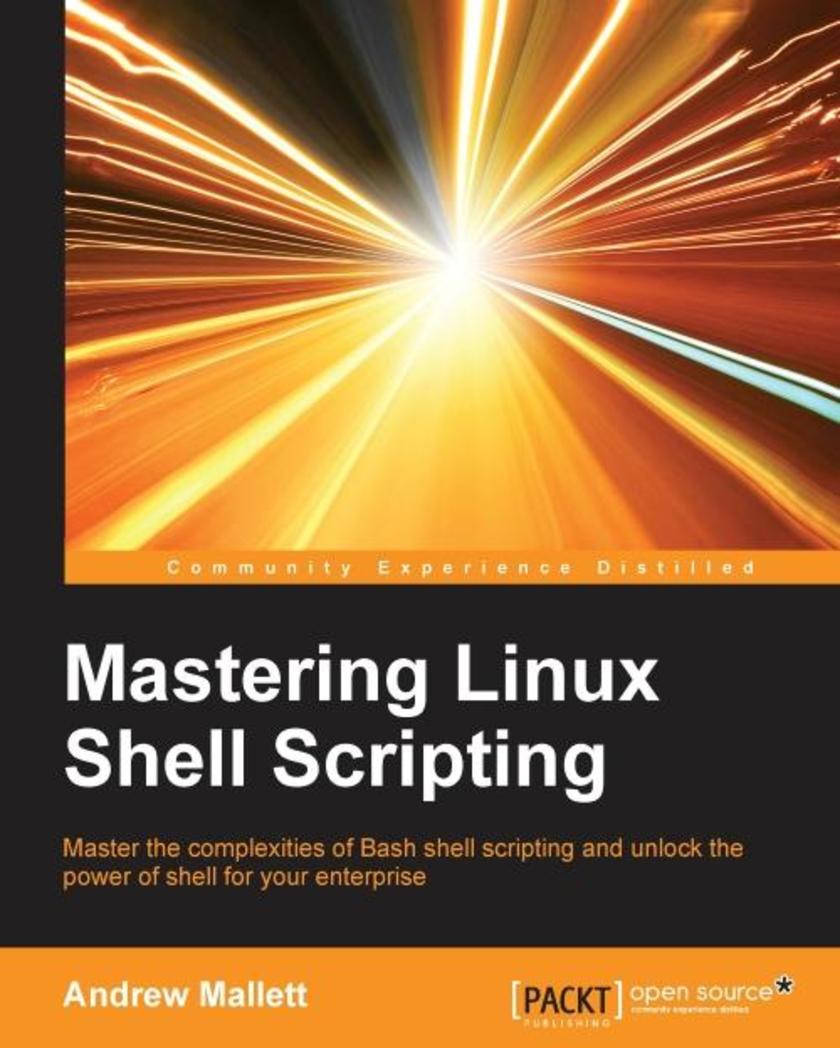
Mastering Linux Shell Scripting
¥63.21
Master the complexities of Bash shell *ing and unlock the power of shell for your enterprise About This Book Identify the high level steps such as verifying user input, using command lines and conditional statements in creating and executing simple shell *s Create and edit dynamic shell *s to manage complex and repetitive tasks Learn about *ing in Perl and programming in Python as a BASH *ing alternative with this practical, step-by-step guide Who This Book Is For Mastering Linux Shell Scripting has been written for Linux administrators who want to automate tasks in their daily lives, saving time and effort. You’ll need to have command-line experience and be familiar with the tasks that you need to automate. What You Will Learn Use the type command to identify the order of command evaluation Create interactive *s that prompt for user input Foster menu structures for operators with little command-line experience Develop *s that dynamically edit web configuration files to produce a new virtual host Write *s that use AWK to search and reports on log files Draft effective *s using functions as building blocks, reducing maintenance and build time Make informed choices by comparing different * languages such as Perl and Python with BASH In Detail Shell *ing is a quick method to prototype a complex application or a problem by automating tasks when working on Linux-based systems. Using both simple one-line commands and command sequences complex problems can be solved with ease, from text processing to backing up sysadmin tools. In this book, you’ll discover everything you need to know to master shell *ing and make informed choices about the elements you employ. Get to grips with the fundamentals of creating and running a * in normal mode, and in debug mode. Learn about various conditional statements' code snippets, and realize the power of repetition and loops in your shell *. Implement functions and edit files using the Stream Editor, * in Perl, program in Python – as well as complete coverage of other *ing languages to ensure you can choose the best tool for your project. Style and approach The book will capture your attention and keep you engaged with the simplicity and clarity of each explanation. Every step is accompanied with screen captures so you can cross-check the results before moving on.
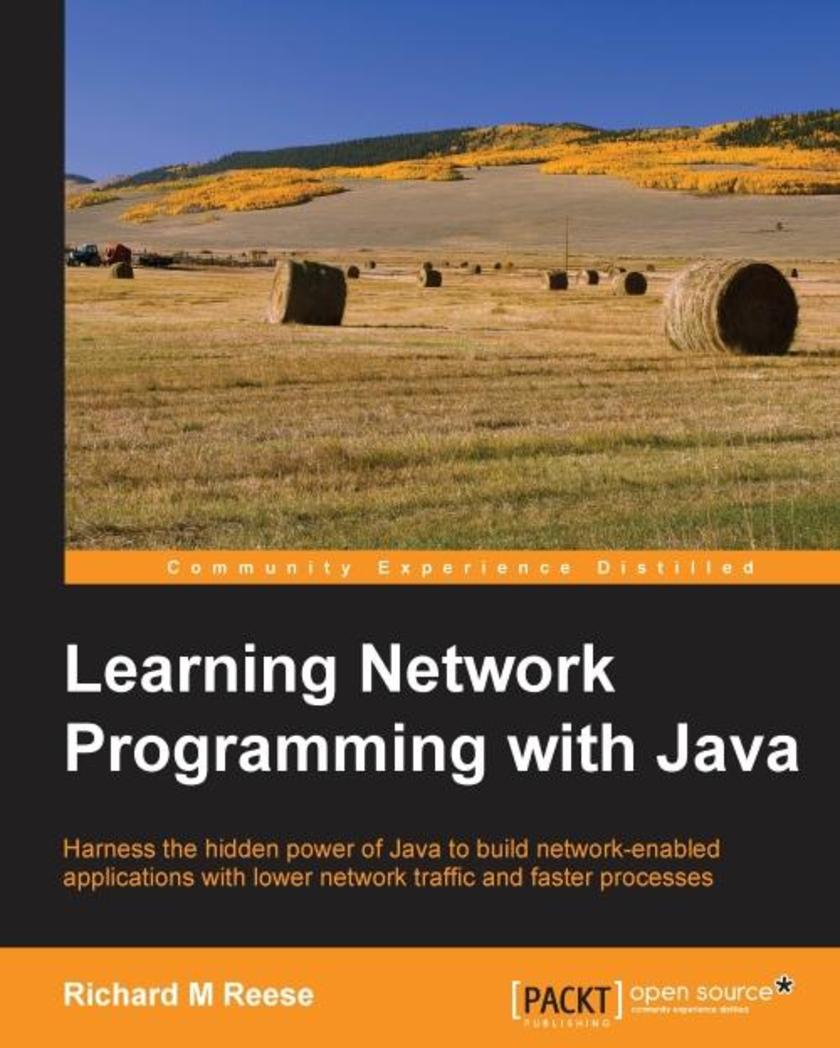
Learning Network Programming with Java
¥90.46
Harness the hidden power of Java to build network-enabled applications with lower network traffic and faster processes About This BookLearn to deliver superior server-to-server communication through the networking channelsGain expertise of the networking features of your own applications to support various network architectures such as client/server and peer-to-peerExplore the issues that impact scalability, affect security, and allow applications to work in a heterogeneous environmentWho This Book Is ForLearning Network Programming with Java is oriented to developers who wish to use network technologies to enhance the utility of their applications. You should have a working knowledge of Java and an interest in learning the latest in network programming techniques using Java. No prior experience with network development or special software beyond the Java SDK is needed. Upon completion of the book, beginner and experienced developers will be able to use Java to access resources across a network and the Internet.What You Will LearnConnect to other applications using socketsUse channels and buffers to enhance communication between applicationsAccess network services and develop client/server applicationsExplore the critical elements of peer-to-peer applications and current technologies availableUse UDP to perform multicastingAddress scalability through the use of core and advanced threading techniques Incorporate techniques into an application to make it more secure Configure and address interoperability issues to enable your applications to work in a heterogeneous environment In Detail Network-aware applications are becoming more prevalent and play an ever-increasing role in the world today. Connecting and using an Internet-based service is a frequent requirement for many applications. Java provides numerous classes that have evolved over the years to meet evolving network needs. These range from low-level socket and IP-based approaches to those encapsulated in software services. This book explores how Java supports networks, starting with the basics and then advancing to more complex topics. An overview of each relevant network technology is presented followed by detailed examples of how to use Java to support these technologies. We start with the basics of networking and then explore how Java supports the development of client/server and peer-to-peer applications. The NIO packages are examined as well as multitasking and how network applications can address practical issues such as security. A discussion on networking concepts will put many network issues into perspective and let you focus on the appropriate technology for the problem at hand. The examples used will provide a good starting point to develop similar capabilities for many of your network needs. Style and approach Each network technology’s terms and concepts are introduced first. This is followed up with code examples to explain these technologies. Many of the examples are supplemented with alternate Java 8 solutions when appropriate. Knowledge of Java 8 is not necessary but these examples will help you better understand the power of Java 8.

Red Hat Enterprise Linux Server Cookbook
¥90.46
Over 60 recipes to help you build, configure, and orchestrate RHEL 7 Server to make your everyday administration experience seamless About This Book Create fully unattended installations and deploy configurations without breaking a sweat Discover and kick-start the newest RHEL 7 configuration and management tools through an easy-to-follow, practical approach for a lazy system management Be guided by an experienced RHEL expert who is a certified Linux engineer with a passion for open source and open standards Who This Book Is For Red Hat Enterprise Linux Server Cookbook is for RHEL 7 system administrators and DevOps in need of a practical reference guide to troubleshoot common issues and quickly perform tasks. What You Will Learn Set up and configure RHEL 7 Server Use NetworkManager to configure all aspects of your network Manage virtual environments using libvirt Set up software repositories Secure and monitor your RHEL environment Configure SELinux, and create and apply its policies Create kickstart *s to automatically deploy RHEL 7 systems Use Orchestration and configuration management tools to manage your environment In Detail Dominating the server market, the Red Hat Enterprise Linux operating system gives you the support you need to modernize your infrastructure and boost your organization’s efficiency. Combining both stability and flexibility, RHEL helps you meet the challenges of today and adapt to the demands of tomorrow. This practical Cookbook guide will help you get to grips with RHEL 7 Server and automating its installation. Designed to provide targeted assistance through hands-on recipe guidance, it will introduce you to everything you need to know about KVM guests and deploying multiple standardized RHEL systems effortlessly. Get practical reference advice that will make complex networks setups look like child’s play, and dive into in-depth coverage of configuring a RHEL system. Also including full recipe coverage of how to set up, configuring, and troubleshoot SELinux, you’ll also discover how secure your operating system, as well as how to monitor it. Style and approach This practical guide is packed full of hands-on recipes that provide quick solutions to the problems faced when building your RHEL 7 system from scratch using orchestration tools. Each topic is explained sequentially in the process of setting up a system and binding everything together.
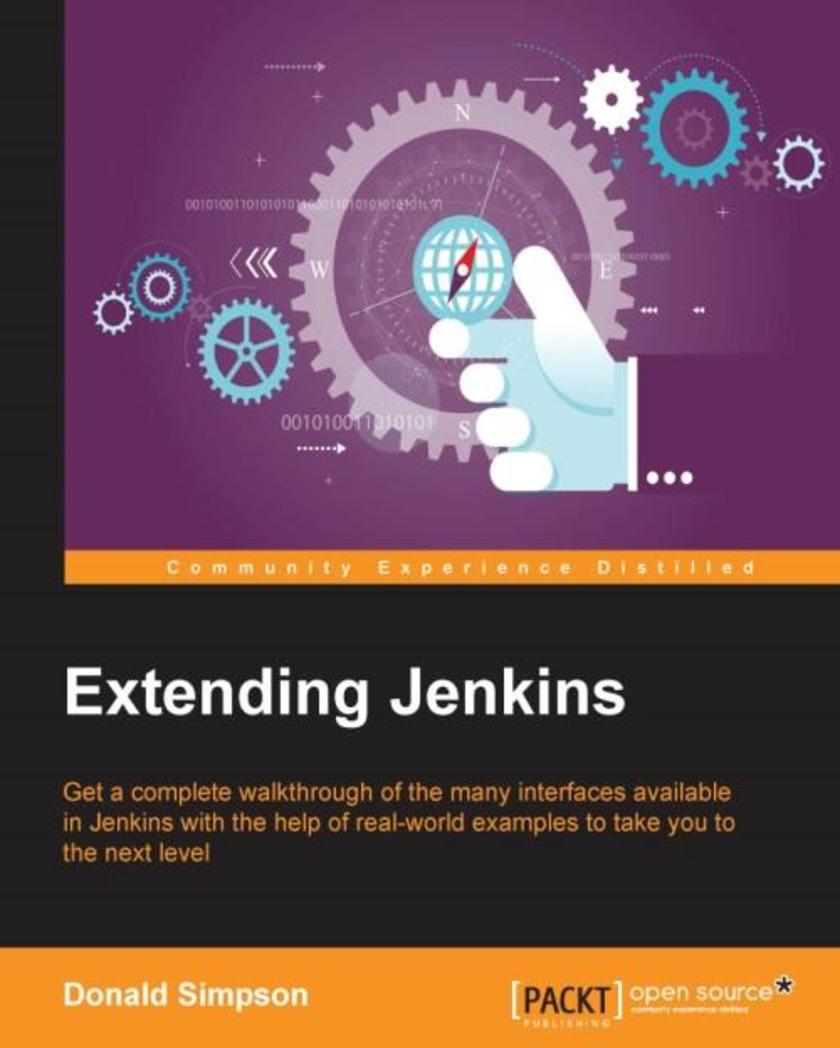
Extending Jenkins
¥63.21
Get a complete walkthrough of the many interfaces available in Jenkins with the help of real-world examples to take you to the next level with Jenkins About This Book Find out how to interact with Jenkins from within Eclipse, NetBeans, and IntelliJ IDEA Develop custom solutions that act upon Jenkins information in real time A step-by-step, practical guide to help you learn about extension points in existing plugins and how to build your own plugin Who This Book Is For This book is aimed primarily at developers and administrators who are interested in taking their interaction and usage of Jenkins to the next level. The book assumes you have a working knowledge of Jenkins and programming in general, and an interest in learning about the different approaches to customizing and extending Jenkins so it fits your requirements and your environment perfectly. What You Will Learn Retrieve and act upon Jenkins information in real time Find out how to interact with Jenkins through a variety of IDEs Develop your own Form and Input validation and customization Explore how Extension points work, and develop your own Jenkins plugin See how to use the Jenkins API and command-line interface Get to know how to remotely update your Jenkins configuration Design and develop your own Information Radiator Discover how Jenkins customization can help improve quality and reduce costs In Detail Jenkins CI is the leading open source continuous integration server. It is written in Java and has a wealth of plugins to support the building and testing of virtually any project. Jenkins supports multiple Software Configuration Management tools such as Git, Subversion, and Mercurial. This book explores and explains the many extension points and customizations that Jenkins offers its users, and teaches you how to develop your own Jenkins extensions and plugins. First, you will learn how to adapt Jenkins and leverage its abilities to empower DevOps, Continuous Integration, Continuous Deployment, and Agile projects. Next, you will find out how to reduce the cost of modern software development, increase the quality of deliveries, and thereby reduce the time to market. We will also teach you how to create your own custom plugins using Extension points. Finally, we will show you how to combine everything you learned over the course of the book into one real-world scenario. Style and approach Extending Jenkins explores and explains advanced Jenkins functionality from a practical point of view, teaching you real-world skills that will help you get more from this powerful software. Each key topic is explained clearly with a practical example, and in sufficient detail so you understand the concepts and can then develop your own solutions using your preferred software and languages.

GameMaker Cookbook
¥80.65
Over 50 hands-on recipes to help you build exhilarating games using the robust GameMaker system About This Book Design and develop game elements that can be used alone or stacked to enhance your gaming experience Explore extensions that can unlock GameMaker: Studio’s true potential to create complex games A recipe-based, easy-to-follow guide to take your GameMaker skills to the next level Who This Book Is For This book is intended for GameMaker: Studio enthusiasts who are looking to add more substance and improve their content. If know your way around the program and have some basic GML skills but want to take them further, then this book is for you. What You Will Learn Set up player control schemes of various types, such as touch controls and a gamepad Create your own physics sandbox Get accustomed to advanced player movement Implement music and 3D sound in your games Utilize GameMaker’s GUI layers to create exciting games Generate adjustable game settings and save systems Add depth to your game with lighting and special effects In Detail GameMaker: Studio started off as a tool capable of creating simple games using a drag-and-drop interface. Since then, it has grown to become a powerful instrument to make release-ready games for PC, Mac, mobile devices, and even current-gen consoles. GameMaker is designed to allow its users to develop games without having to learn any of the complex programming languages such as C++ or Java. It also allows redistribution across multiple platforms. This book teaches you to harness GameMaker: Studio’s full potential and take your game development to new heights. It begins by covering the basics and lays a solid foundation for advanced GameMaker concepts. Moving on, it covers topics such as controls, physics, and advanced movement, employing a strategic approach to the learning curve. The book concludes by providing insights into complex concepts such as the GUI, menus, save system, lighting, particles, and VFX. By the end of the book, you will be able to design games using GameMaker: Studio and implement the same techniques in other games you intend to design. Style and approach A problem-solving guide that teaches you the construction of game elements and mechanics to be integrated in games for rapid prototyping. Each overall topic includes several individual recipes taught through step-by-step instructions, and in-depth follow-up with examples.
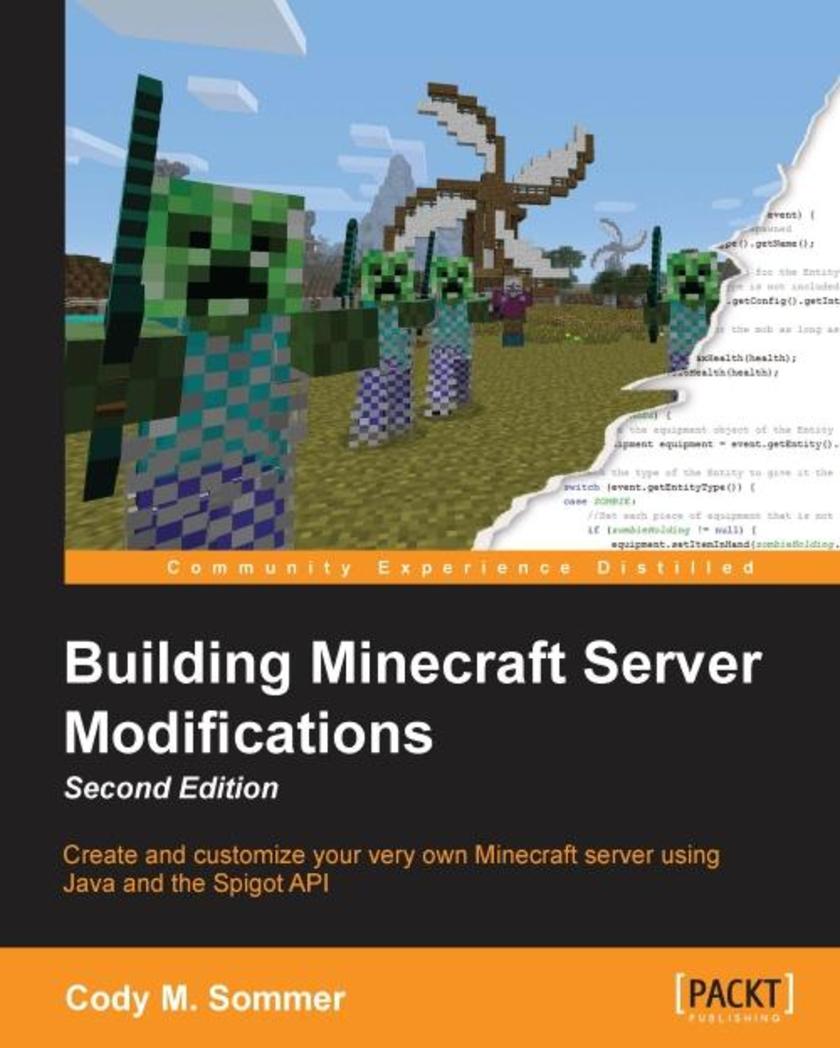
Building Minecraft Server Modifications - Second Edition
¥54.49
Create and customize your very own Minecraft server using Java and the Spigot API About This Book Set up a Minecraft server that you control Use object-oriented programming to modify Minecraft regardless of your level of experience This interactive guide will help you create a unique experience for you and your friends Who This Book Is For This book is great for anyone who is interested in customizing their Minecraft server. Whether you are new to programming, Java, Bukkit, or even Minecraft itself, this book has you covered. All you need is a valid Minecraft account. If you are interested in programming as a career or hobby, this book will get you started. If you are simply interested in playing Minecraft with your friends, then this book will help you make that experience even more enjoyable. What You Will Learn Install and run a Spigot server for free on your home PC Adjust the server settings to customize Minecraft to your liking Install an IDE and configure a project to write code Install and test plugins on a Spigot server Test your plugins through debugging the code Program in game commands and permissions Get to know advanced programming concepts such as event-driven programming, configuration files, saving/loading data, and scheduled tasks Implement configuration files to make your plugins customizable Save and load your plugin's data to persist across server restarts In Detail Minecraft is a sandbox game that allows you to play it in any way you want. Coupled with a multiplayer server powered by Spigot, you can customize the game even more! Using the Bukkit API, anyone interested in learning how to program can control their Minecraft world by developing server plugins. This book is a great introduction to software development through the wonderful world of Minecraft. We start by instructing you through how to set up your home PC for Minecraft server development. This includes an IDE complete with the required libraries as well as a Spigot server to test on. You will be guided through writing code for several different plugins. Each chapter teaches you new skills to create plugins of increasing complexity, and each plugin adds a new concept of the Bukkit API By the end of the book, you will have all the knowledge you need about the API to successfully create any type of plugin. You can then practice and build your Java skills through developing more mods for their server. Style and approach This hands-on guide is filled with interactive examples to help you modify Minecraft. Programming terms and concepts are explained along the way so even those who have never written code before can keep up.

ArcGIS Blueprints
¥99.18
Explore the robust features of Python to create real-world ArcGIS applications through exciting, hands-on projects About This Book Get to grips with the big world of Python add-ins and wxPython in GUI development to implement their features in your application Integrate advanced Python libraries, ArcPy mapping, and data access module techniques to develop a mapping application Construct a top-notch intermediate-to-advanced project by accessing ArcGIS Server and ArcGIS Online resources through the ArcGIS REST API using a project-based approach Who This Book Is For If you have prior experience building simple apps with ArcGIS and now have a fancy for developing a more challenging and complex desktop application in ArcGIS, then this book is ideal for you. What You Will Learn Automate the creation of creative output data visualizations including maps, charts, and graphs Explore ways to use the ArcPy Mapping module and Data-driven Pages to automate the creation of map books in your own project Develop applications that use the Plotly platform and library to create stunning charts and graphs that can be integrated into ArcGIS Desktop Build tools that access REST services and download data to a local geodatabase Design, build, and integrate advanced GUIs with wxPython and ArcGIS Desktop in ArcGIS Get clued up about constructing applications that export data to Google Earth Pro to automate time-consuming complex processes Maximize the access of ArcGIS Server and ArcGIS Online using the ArcGIS REST API with Python In Detail This book is an immersive guide to take your ArcGIS Desktop application development skills to the next level It starts off by providing detailed de*ion and examples of how to create ArcGIS Desktop Python toolboxes that will serve as containers for many of the applications that you will build. We provide several practical projects that involve building a local area/community map and extracting wildfire data. You will then learn how to build tools that can access data from ArcGIS Server using the ArcGIS REST API. Furthermore, we deal with the integration of additional open source Python libraries into your applications, which will help you chart and graph advanced GUI development; read and write JSON, CSV, and XML format data sources; write outputs to Google Earth Pro, and more. Along the way, you will be introduced to advanced ArcPy Mapping and ArcPy Data Access module techniques and use data-driven Pages to automate the creation of map books. Finally, you will learn advanced techniques to work with video and social media feeds. By the end of the book, you will have your own desktop application without having spent too much time learning sophisticated theory. Style and approach This is an easy-to-follow, project-based guide that guides you through the whole ArcGIS theme with practical, real-world examples and a systematic approach.
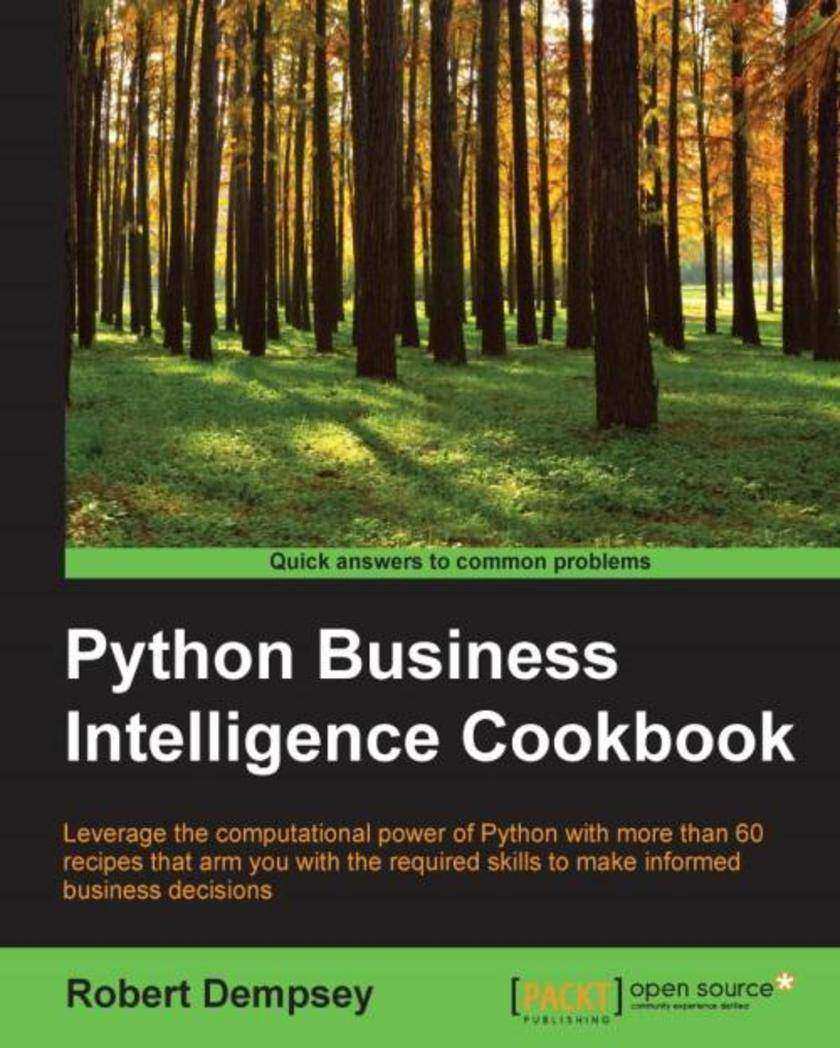
Python Business Intelligence Cookbook
¥71.93
Leverage the computational power of Python with more than 60 recipes that arm you with the required skills to make informed business decisions About This Book Want to minimize risk and optimize profits of your businessLearn to create efficient analytical reports with ease using this highly practical, easy-to-follow guide Learn to apply Python for business intelligence tasks—preparing, exploring, analyzing, visualizing and reporting—in order to make more informed business decisions using data at hand Learn to explore and analyze business data, and build business intelligence dashboards with the help of various insightful recipes Who This Book Is For This book is intended for data analysts, managers, and executives with a basic knowledge of Python, who now want to use Python for their BI tasks. If you have a good knowledge and understanding of BI applications and have a “working” system in place, this book will enhance your toolbox. What You Will Learn Install Anaconda, MongoDB, and everything you need to get started with your data analysis Prepare data for analysis by querying cleaning and standardizing data Explore your data by creating a Pandas data frame from MongoDB Gain powerful insights, both statistical and predictive, to make informed business decisions Visualize your data by building dashboards and generating reports Create a complete data processing and business intelligence system In Detail The amount of data produced by businesses and devices is going nowhere but up. In this scenario, the major advantage of Python is that it's a general-purpose language and gives you a lot of flexibility in data structures. Python is an excellent tool for more specialized analysis tasks, and is powered with related libraries to process data streams, to visualize datasets, and to carry out scientific calculations. Using Python for business intelligence (BI) can help you solve tricky problems in one go. Rather than spending day after day scouring Internet forums for “how-to” information, here you’ll find more than 60 recipes that take you through the entire process of creating actionable intelligence from your raw data, no matter what shape or form it’s in. Within the first 30 minutes of opening this book, you’ll learn how to use the latest in Python and NoSQL databases to glean insights from data just waiting to be exploited.< We’ll begin with a quick-fire introduction to Python for BI and show you what problems Python solves. From there, we move on to working with a predefined data set to extract data as per business requirements, using the Pandas library and MongoDB as our storage engine. Next, we will analyze data and perform transformations for BI with Python. Through this, you will gather insightful data that will help you make informed decisions for your business. The final part of the book will show you the most important task of BI—visualizing data by building stunning dashboards using Matplotlib, PyTables, and iPython Notebook. Style and approach This is a step-by-step guide to help you prepare, explore, analyze and report data, written in a conversational tone to make it easy to grasp. Whether you’re new to BI or are looking for a better way to work, you’ll find the knowledge and skills here to get your job done efficiently.

Gradle Essentials
¥54.49
Master the fundamentals of Gradle using real-world projects with this quick and easy-to-read guide About This Book Write beautiful build *s for various types of projects effortlessly Become more productive by harnessing the power and elegance of the Gradle DSL Learn how to use Gradle quickly and effectively with this step-by-step guide Who This Book Is For This book is for Java and other JVM-based language developers who want to use Gradle or are already using Gradle on their projects. No prior knowledge of Gradle is required, but some familiarity with build-related terminologies and an understanding of the Java language would help. What You Will Learn Master the Gradle DSL by identifying the building blocks Learn just enough Groovy for Gradle Set up tests and reports for your projects to make them CI ready Create library, stand-alone, and web projects Craft multi-module projects quickly and efficiently Migrate existing projects to a modern Gradle build Extract common build logic into plugins Write builds for languages like Java, Groovy, and Scala In Detail Gradle is an advanced and modern build automation tool. It inherits the best elements of the past generation of build tools, but it also differs and innovates to bring terseness, elegance, simplicity, and the flexibility to build. Right from installing Gradle and writing your first build file to creating a fully-fledged multi-module project build, this book will guide you through its topics in a step-by-step fashion. You will get your hands dirty with a simple Java project built with Gradle and go on to build web applications that are run with Jetty or Tomcat. We take a unique approach towards explaining the DSL using the Gradle API, which makes the DSL more accessible and intuitive. All in all, this book is a concise guide to help you decipher the Gradle build files, covering the essential topics that are most useful in real-world projects. With every chapter, you will learn a new topic and be able to readily implement your build files. Style and approach This step-by-step guide focuses on being productive with every chapter. When required, topics are explained in-depth to give you a good foundation of the Gradle fundamentals. The book covers most aspects of builds required for conventional JVM-based projects, and when necessary, points you towards the right resources.
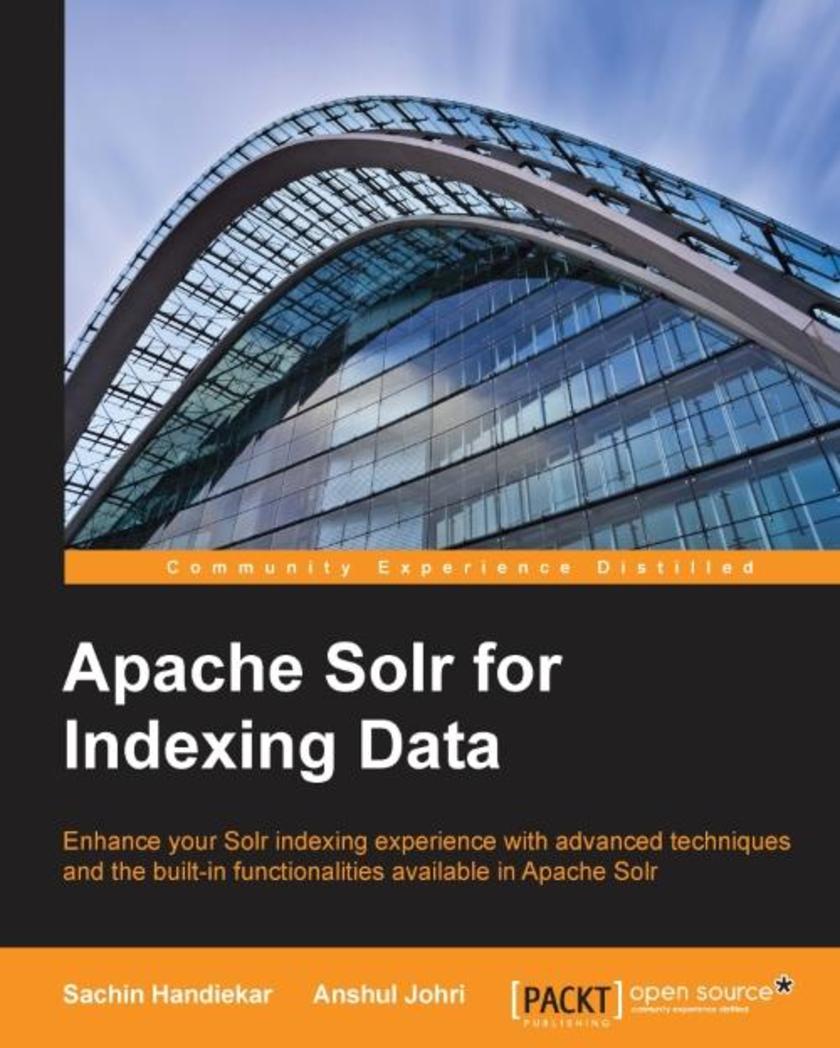
Apache Solr for Indexing Data
¥63.21
Enhance your Solr indexing experience with advanced techniques and the built-in functionalities available in Apache Solr About This Book Learn about distributed indexing and real-time optimization to change index data on fly Index data from various sources and web crawlers using built-in analyzers and tokenizers This step-by-step guide is packed with real-life examples on indexing data Who This Book Is For This book is for developers who want to increase their experience of indexing in Solr by learning about the various index handlers, analyzers, and methods available in Solr. Beginner level Solr development skills are expected. What You Will Learn Get to know the basic features of Solr indexing and the analyzers/tokenizers available Index XML/JSON data in Solr using the HTTP Post tool and CURL command Work with Data Import Handler to index data from a database Use Apache Tika with Solr to index word documents, PDFs, and much more Utilize Apache Nutch and Solr integration to index crawled data from web pages Update indexes in real-time data feeds Discover techniques to index multi-language and distributed data in Solr Combine the various indexing techniques into a real-life working example of an online shopping web application In Detail Apache Solr is a widely used, open source enterprise search server that delivers powerful indexing and searching features. These features help fetch relevant information from various sources and documentation. Solr also combines with other open source tools such as Apache Tika and Apache Nutch to provide more powerful features. This fast-paced guide starts by helping you set up Solr and get acquainted with its basic building blocks, to give you a better understanding of Solr indexing. You’ll quickly move on to indexing text and boosting the indexing time. Next, you’ll focus on basic indexing techniques, various index handlers designed to modify documents, and indexing a structured data source through Data Import Handler. Moving on, you will learn techniques to perform real-time indexing and atomic updates, as well as more advanced indexing techniques such as de-duplication. Later on, we’ll help you set up a cluster of Solr servers that combine fault tolerance and high availability. You will also gain insights into working scenarios of different aspects of Solr and how to use Solr with e-commerce data. By the end of the book, you will be competent and confident working with indexing and will have a good knowledge base to efficiently program elements. Style and approach This fast-paced guide is packed with examples that are written in an easy-to-follow style, and are accompanied by detailed explanation. Working examples are included to help you get better results for your applications.
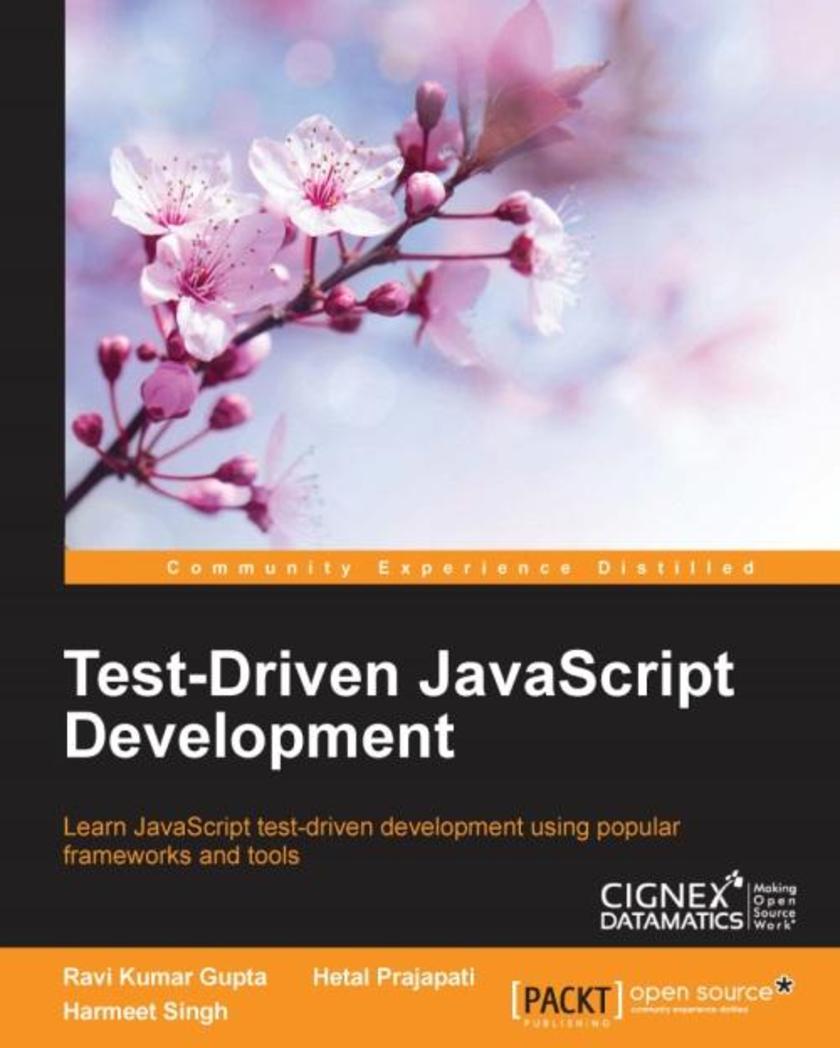
Test-Driven JavaScript Development
¥71.93
Learn JavaScript test-driven development using popular frameworks and tools About This Book Learn the life cycle of TDD and its importance in real-world application Gain knowledge about popular tools and analyze features, syntax, and how they help in JavaScript testing Implement test-driven programming exercises using the practical code examples Who This Book Is For If you have an intermediate knowledge of HTML, CSS, and JavaScript and want to learn how and why the test-driven development approach is better for your assignments, then this book is for you. What You Will Learn Basic TDD fundamentals, life cycle, and benefits Become acquainted with the concepts and elements of unit testing and writing basic unit tests for JavaScript Understand the way JsUnit, Qunit, Karma and DalekJs work Use the Jasmine framework Interpret feature detection and devise tests specific to cross-browser compatibility Integrate jsTestDriver with Eclipse and run tests with jsTestDriver Explore re-factoring, adding and notifying observers Understand test-driven development in case of server-side JS In Detail Initially, all processing used to happen on the server-side and simple output was the response to web browsers. Nowadays, there are so many JavaScript frameworks and libraries created that help readers to create charts, animations, simulations, and so on. By the time a project finishes or reaches a stable state, so much JavaScript code has already been written that changing and maintaining it further is tedious. Here comes the importance of automated testing and more specifically, developing all that code in a test-driven environment. Test-driven development is a methodology that makes testing the central part of the design process – before writing code developers decide upon the conditions that code must meet to pass a test. The end goal is to help the readers understand the importance and process of using TDD as a part of development. This book starts with the details about test-driven development, its importance, need, and benefits. Later the book introduces popular tools and frameworks like YUI, Karma, QUnit, DalekJS, JsUnit and goes on to utilize Jasmine, Mocha, Karma for advanced concepts like feature detection, server-side testing, and patterns. We are going to understand, write, and run tests, and further debug our programs. The book concludes with best practices in JavaScript testing. By the end of the book, the readers will know why they should test, how to do it most efficiently, and will have a number of versatile tests (and methods for devising new tests) to get to work immediately. Style and approach Easy-to-follow guide with suitable examples for developing JavaScript code in the test-Driven environment, with popular tools and frameworks. User experience and statements are also included to help readers make a better choice of tool for real-world projects.

Getting Started with React Native
¥54.49
Learn to build modern native iOS and Android applications using JavaScript and the incredible power of React About This Book Learn to design and build a fully-featured application using the newest cutting-edge framework from Facebook Leverage your JavaScript skills to become a native app developer Develop custom UI components, implement smooth navigation, and access native features such as geolocation and local storage Who This Book Is For This book is for web developers who want to learn to build fast, good-looking, native mobile applications using the skills they already have. If you already have some JavaScript knowledge or are using React on the web, then you will be able to quickly get up and running with React Native for iOS and Android. What You Will Learn Set up the React Native environment on both devices and emulators Gain an in-depth understanding of how React Native works behind the scenes Write your own custom native UI components Learn the ins and outs of screen navigation Master the art of layout and styles Work with device-exclusive data such as geolocation Develop native modules in Objective-C and Java that interact with JavaScript Test and deploy your application for a production-ready environment In Detail React Native is a game-changing approach to hybrid mobile development. Web developers can leverage their existing skills to write mobile applications in JavaScript that are truly native without using cross-compilation or web views. These applications have all of the advantages of those written in Objective-C or Java, combined with the rapid development cycle that JavaScript developers are accustomed to. Web developers who want to develop native mobile applications face a high barrier to entry, because they are forced to learn platform-specific languages and frameworks. Numerous hybrid technologies have tried to simplify this process, but have failed to achieve the performance and appearance that users expect. This book will show you all the advantages of true native development that React Native has without the steep learning curve, leveraging the knowledge you already have. We do this by getting you up and running quickly with a sample application. Next, we’ll introduce you to the fundamentals of creating components and explain how React Native works under the hood. Once you have established a solid foundation, you will dive headfirst into developing a real-world application from start to finish. Along the way, we will demonstrate how to create multiple screens and navigate between them,use layout and style native UI components, and access native APIs such as local storage and geolocation. Finally, we tackle the advanced topic of Native modules, which demonstrates that there are truly no limits to what you can do with React Native. Style and approach This book provides a simple and easy way to build mobile applications in JavaScript. Each topic takes you through the life cycle of creating a fully-functional native app, with detailed explanations of the entire process.
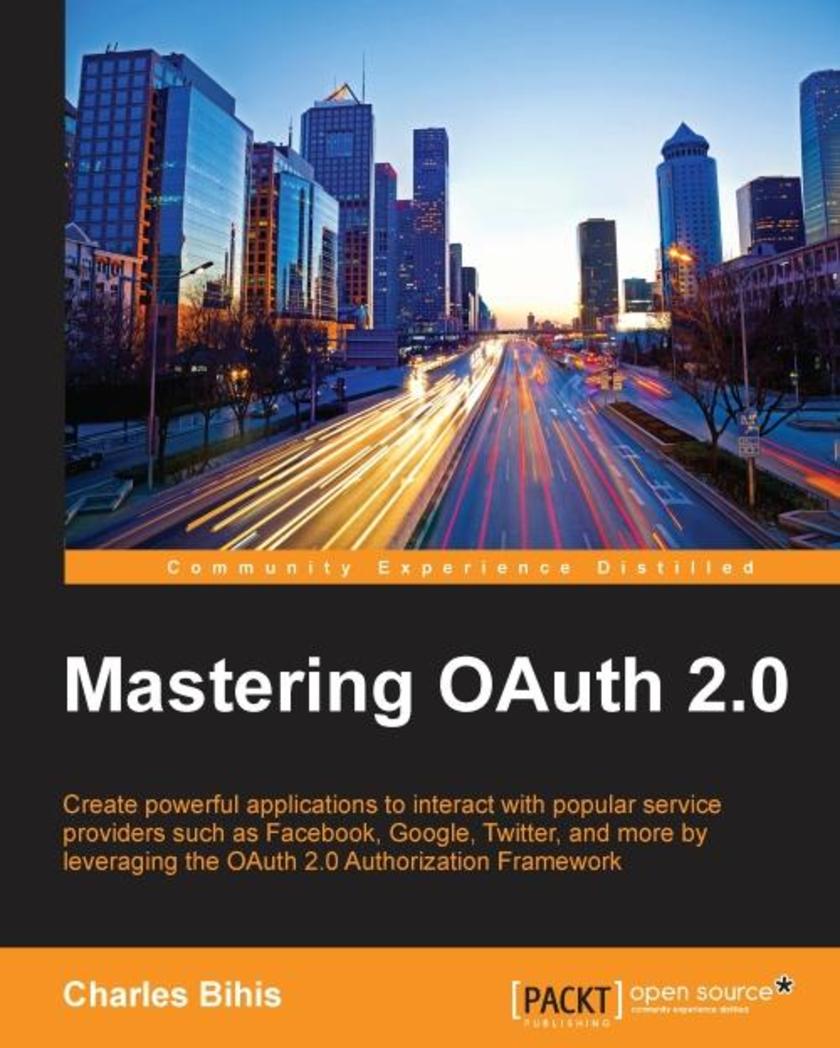
Mastering OAuth 2.0
¥80.65
Create powerful applications to interact with popular service providers such as Facebook, Google, Twitter, and more by leveraging the OAuth 2.0 Authorization Framework About This Book Learn how to use the OAuth 2.0 protocol to interact with the world's most popular service providers, such as Facebook, Google, Instagram, Slack, Box, and more Master the finer details of this complex protocol to maximize the potential of your application while maintaining the utmost of security Step through the construction of a real-world working application that logs you in with your Facebook account to create a compelling infographic about the most important person in the world—you! Who This Book Is Fo If you are an application developer, software architect, security engineer, or even a casual programmer looking to leverage the power of OAuth, Mastering OAuth 2.0 is for you. Covering basic topics such as registering your application and choosing an appropriate workflow, to advanced topics such as security considerations and extensions to the specification, this book has something for everyone. A basic knowledge of programming and OAuth is recommended. What You Will Learn Discover the power and prevalence of OAuth 2.0 and use it to improve your application's capabilities Step through the process of creating a real-world application that interacts with Facebook using OAuth 2.0 Examine the various workflows described by the specification, looking at what they are and when to use them Learn about the many security considerations involved with creating an application that interacts with other service providers Develop your debugging skills with dedicated pages for tooling and troubleshooting Build your own rich, powerful applications by leveraging world-class technologies from companies around the world In Detail OAuth 2.0 is a powerful authentication and authorization framework that has been adopted as a standard in the technical community. Proper use of this protocol will enable your application to interact with the world's most popular service providers, allowing you to leverage their world-class technologies in your own application. Want to log your user in to your application with their Facebook accountWant to display an interactive Google Map in your applicationHow about posting an update to your user's LinkedIn feedThis is all achievable through the power of OAuth. With a focus on practicality and security, this book takes a detailed and hands-on approach to explaining the protocol, highlighting important pieces of information along the way. At the beginning, you will learn what OAuth is, how it works at a high level, and the steps involved in creating an application. After obtaining an overview of OAuth, you will move on to the second part of the book where you will learn the need for and importance of registering your application and types of supported workflows. You will discover more about the access token, how you can use it with your application, and how to refresh it after expiration. By the end of the book, you will know how to make your application architecture robust. You will explore the security considerations and effective methods to debug your applications using appropriate tools. You will also have a look at special considerations to integrate with OAuth service providers via native mobile applications. In addition, you will also come across support resources for OAuth and credentials grant. Style and approach With a focus on practicality and security, Mastering OAuth 2.0 takes a top-down approach at exploring the protocol. Discussed first at a high level, examining the importance and overall structure of the protocol, the book then dives into each subject, adding more depth as we proceed. This all culminates in an example application that will be built, step by step, using the valuable and practical knowledge you have gained.




 购物车
购物车 个人中心
个人中心



